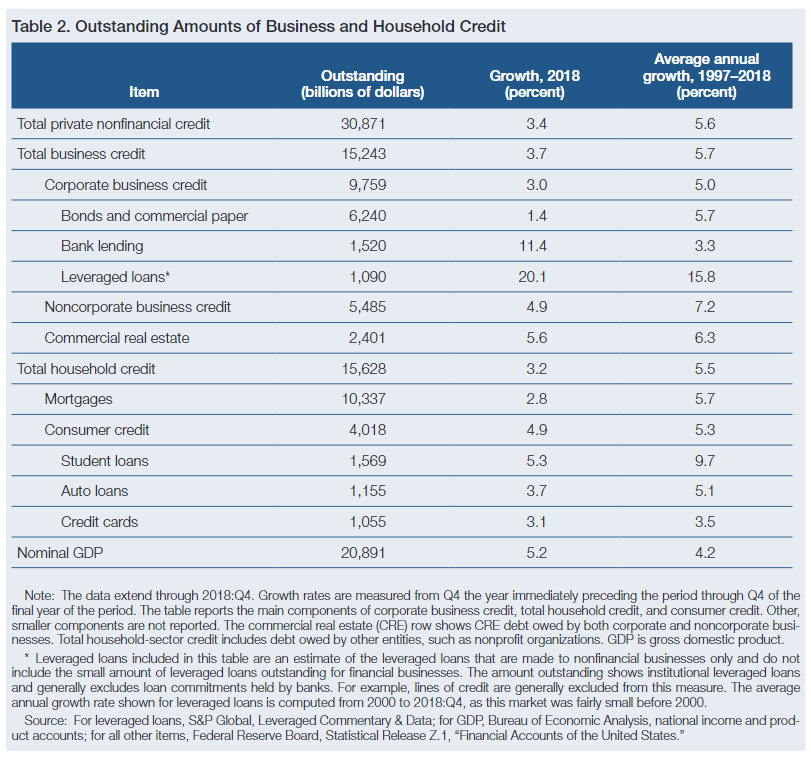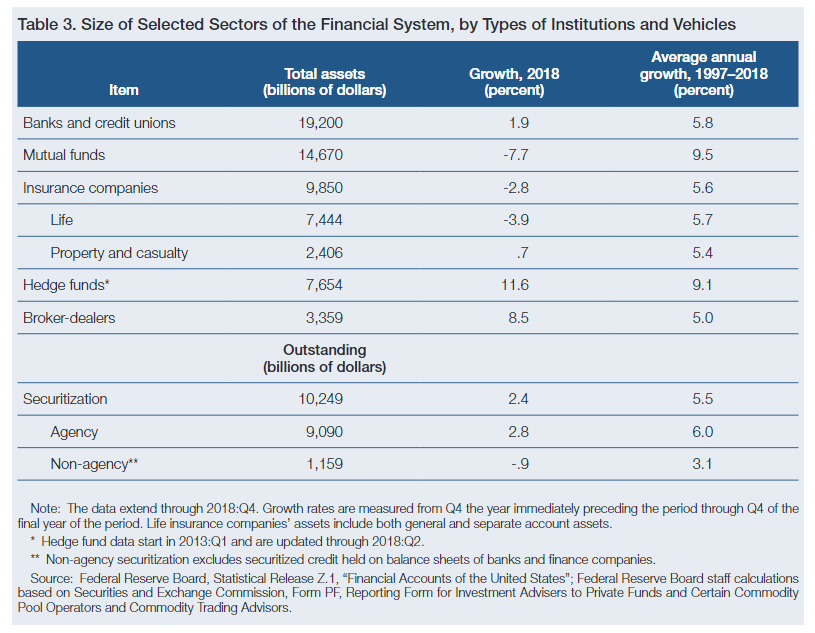
Financial Stability Report Discloses Alarm on Leveraged Loans
Posted on 05/07/2019
The U.S. Federal Reserve Board put out its Financial Stability Report (May 2019). The Board of Governors at the Federal Reserve are keenly aware that vulnerabilities accumulate over time and are aspects of the financial system that can cause virulent problems during times of stress. The report recognizes that the stated vulnerabilities often interact with each other.
The report lays out some vulnerabilities.
Elevated Valuation Pressures
From the text, “Elevated valuation pressures are signaled by asset prices that are high relative to economic fundamentals or historical norms and are often driven by an increased willingness of investors to take on risk. As such, elevated valuation pressures imply a greater possibility of outsized drops in asset prices.”
Excessive Borrowing
From the text, “Excessive borrowing by businesses and households leaves them vulnerable to distress if their incomes decline or the assets they own fall in value. In the event of such shocks, businesses and households with high debt burdens may need to cut back spending sharply, affecting the overall level of economic activity. Moreover, when businesses and households cannot make payments on their loans, financial institutions and investors incur losses.”
Excessive Leverage from the Financial Sector
From the text, “Excessive leverage within the financial sector increases the risk that financial institutions will not have the ability to absorb even modest losses when hit by adverse shocks.
In those situations, institutions will be forced to cut back lending, sell their assets, or, in extreme cases, shut down. Such responses can lead to credit crunches in which access to credit for households and businesses is substantially impaired.”
Panic
From the text, “Funding risks expose the financial system to the possibility that investors will “run” by withdrawing their funds from a particular institution or sector. Many financial institutions raise funds from the public with a commitment to return their investors’ money on short notice, but those institutions then invest much of the funds in illiquid assets that are hard to sell quickly or in assets that have a long maturity. This liquidity and maturity transformation can create an incentive for investors to withdraw funds quickly in adverse situations.
Facing a run, financial institutions may need to sell assets quickly at ‘fire sale’ prices, thereby incurring substantial losses and potentially even becoming insolvent. Historians and economists often refer to widespread investor runs as ‘financial panics.’ ”
The report calls out leveraged loans, “Business-sector debt relative to GDP is historically high, whereas borrowing by households remains at a modest level relative to incomes.”


Source: Financial Stability Report May 2019
